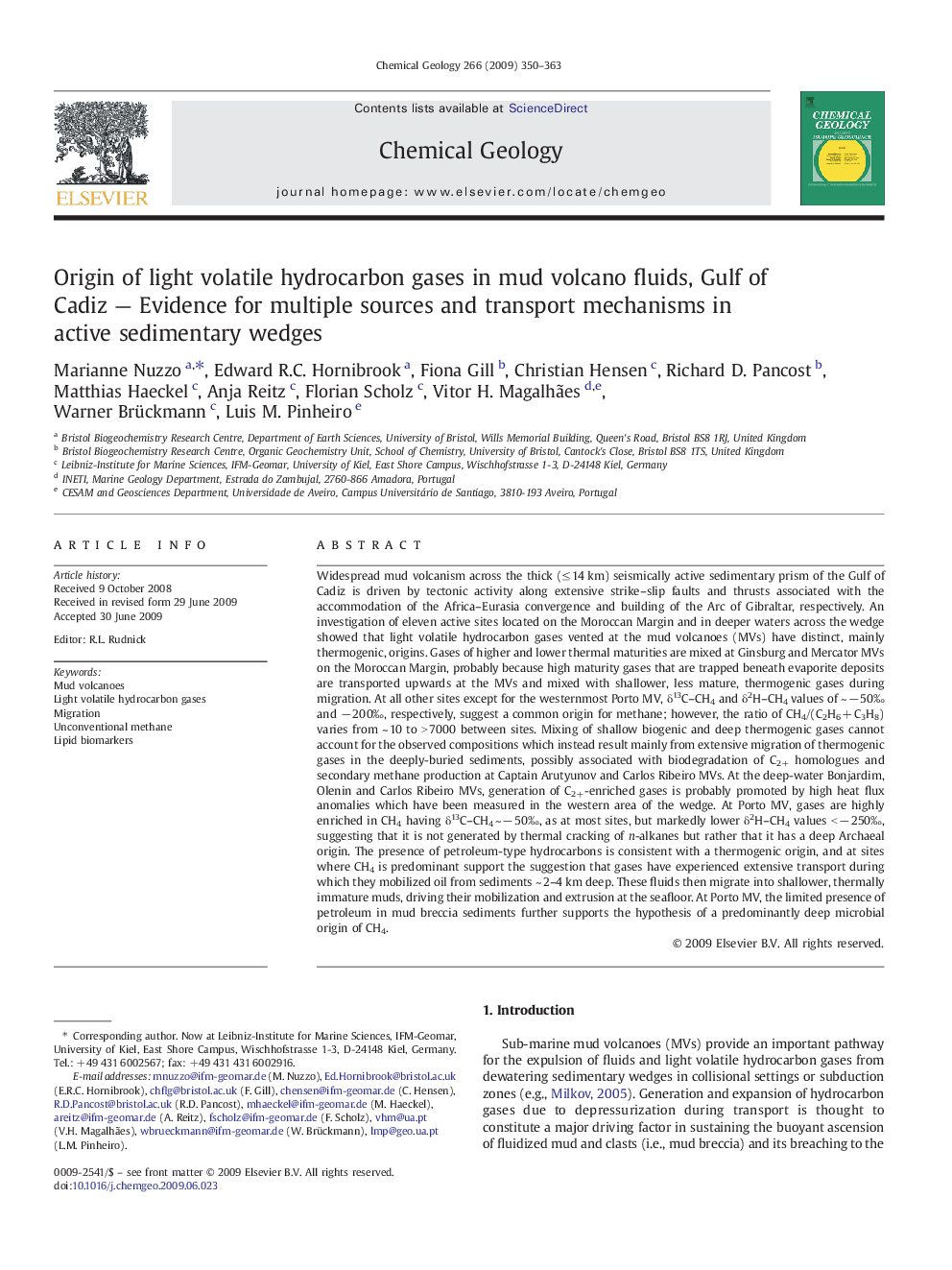| کد مقاله | کد نشریه | سال انتشار | مقاله انگلیسی | نسخه تمام متن |
|---|---|---|---|---|
| 4700206 | 1637701 | 2009 | 14 صفحه PDF | دانلود رایگان |
عنوان انگلیسی مقاله ISI
Origin of light volatile hydrocarbon gases in mud volcano fluids, Gulf of Cadiz - Evidence for multiple sources and transport mechanisms in active sedimentary wedges
دانلود مقاله + سفارش ترجمه
دانلود مقاله ISI انگلیسی
رایگان برای ایرانیان
موضوعات مرتبط
مهندسی و علوم پایه
علوم زمین و سیارات
ژئوشیمی و پترولوژی
پیش نمایش صفحه اول مقاله

چکیده انگلیسی
Widespread mud volcanism across the thick (â¤Â 14 km) seismically active sedimentary prism of the Gulf of Cadiz is driven by tectonic activity along extensive strike-slip faults and thrusts associated with the accommodation of the Africa-Eurasia convergence and building of the Arc of Gibraltar, respectively. An investigation of eleven active sites located on the Moroccan Margin and in deeper waters across the wedge showed that light volatile hydrocarbon gases vented at the mud volcanoes (MVs) have distinct, mainly thermogenic, origins. Gases of higher and lower thermal maturities are mixed at Ginsburg and Mercator MVs on the Moroccan Margin, probably because high maturity gases that are trapped beneath evaporite deposits are transported upwards at the MVs and mixed with shallower, less mature, thermogenic gases during migration. At all other sites except for the westernmost Porto MV, δ13C-CH4 and δ2H-CH4 values of ~ â 50â° and â 200â°, respectively, suggest a common origin for methane; however, the ratio of CH4/(C2H6 + C3H8) varies from ~ 10 to > 7000 between sites. Mixing of shallow biogenic and deep thermogenic gases cannot account for the observed compositions which instead result mainly from extensive migration of thermogenic gases in the deeply-buried sediments, possibly associated with biodegradation of C2+ homologues and secondary methane production at Captain Arutyunov and Carlos Ribeiro MVs. At the deep-water Bonjardim, Olenin and Carlos Ribeiro MVs, generation of C2+-enriched gases is probably promoted by high heat flux anomalies which have been measured in the western area of the wedge. At Porto MV, gases are highly enriched in CH4 having δ13C-CH4 ~ â 50â°, as at most sites, but markedly lower δ2H-CH4 values < â 250â°, suggesting that it is not generated by thermal cracking of n-alkanes but rather that it has a deep Archaeal origin. The presence of petroleum-type hydrocarbons is consistent with a thermogenic origin, and at sites where CH4 is predominant support the suggestion that gases have experienced extensive transport during which they mobilized oil from sediments ~ 2-4 km deep. These fluids then migrate into shallower, thermally immature muds, driving their mobilization and extrusion at the seafloor. At Porto MV, the limited presence of petroleum in mud breccia sediments further supports the hypothesis of a predominantly deep microbial origin of CH4.
ناشر
Database: Elsevier - ScienceDirect (ساینس دایرکت)
Journal: Chemical Geology - Volume 266, Issues 3â4, 30 August 2009, Pages 350-363
Journal: Chemical Geology - Volume 266, Issues 3â4, 30 August 2009, Pages 350-363
نویسندگان
Marianne Nuzzo, Edward R.C. Hornibrook, Fiona Gill, Christian Hensen, Richard D. Pancost, Matthias Haeckel, Anja Reitz, Florian Scholz, Vitor H. Magalhães, Warner Brückmann, Luis M. Pinheiro,